Rage against the latrine: Onkaparinga’s $100k-a-year toilet vandalism bill
Public toilets in the City of Onkaparinga are being vandalised more than 800 times a year, according to council data, with ratepayers footing an estimated $100,000 annual bill for repairs.

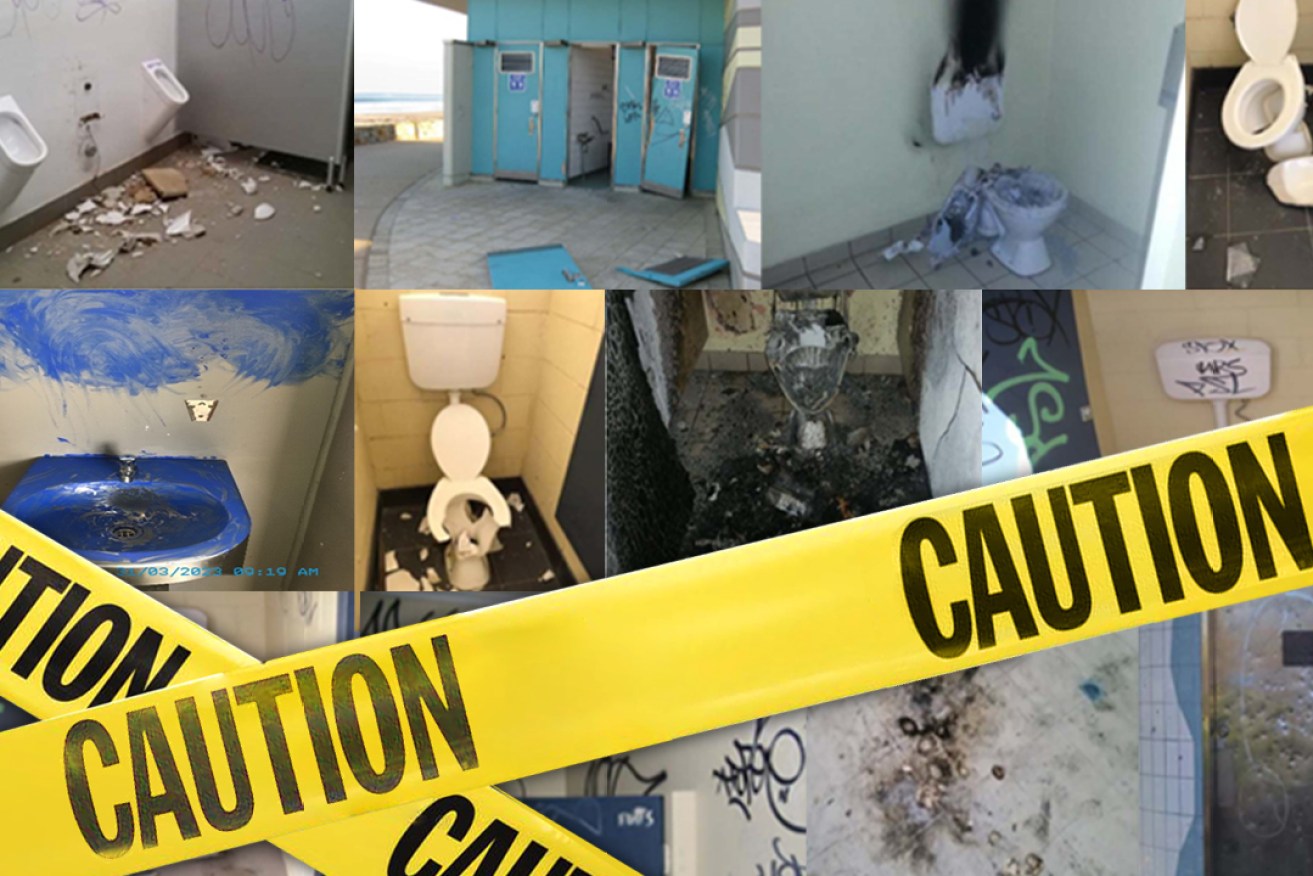
Public toilets in the City of Onkaparinga have been subject to repeated vandalism. Photo: City of Onkaparinga/supplied; graphic design: Jayde Vandborg
The City of Onkaparinga published data last week about its 70 public toilets, reporting they were subject to 829 “vandalism incidents” in 2022-23.
That’s on top of 508 such incidents in 2021-22, 851 in 2020-21, 841 in 2019-20 and a slightly lower 732 in 2018-19.
The figures equate to more than two cases of public toilet vandalism every day.
The council has spent an estimated $520,000 to $570,000 on public toilet repairs over the last five years, including between $110,000 to $120,000 in 2022-23.
This does not include an arson attack on two public toilets last year which, according to the council, caused $25,600 damage. The repair bill was claimed through insurance.
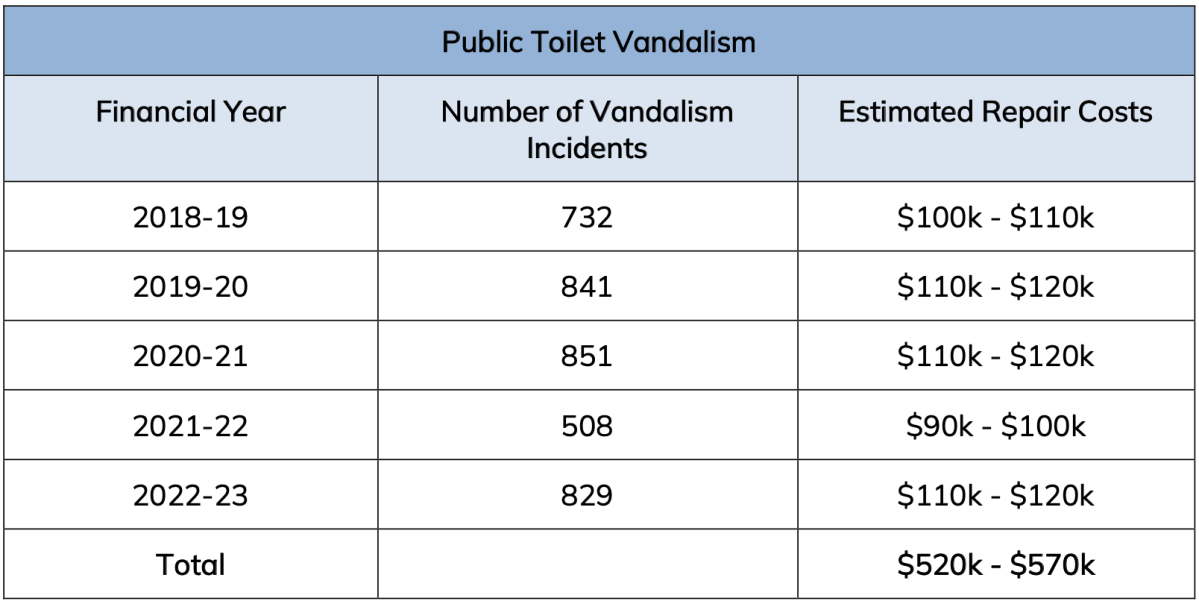
A table of estimated toilet vandalism incidents and repair bill costs since 2018-19. Table: City of Onkaparinga
The City of Onkaparinga is South Australia’s most populous council area and manages a yearly budget of more than $200 million.
Kirk Richardson, the council’s director, city operations, said the most common forms of vandalism were graffiti; purposeful damage to toilets, urinals, doors, cisterns, toilet paper dispensers and tiles; deliberate blocking of toilets and sinks; and arson.
“As with other council assets in our parks and open spaces, our public toilets are unsupervised amenities that, in many cases, are situated in isolated locations where natural surveillance is less than ideal,” he said.
“As a result, they can unfortunately be targeted for vandalism. This issue has been negatively impacting councils and their communities for many years.”
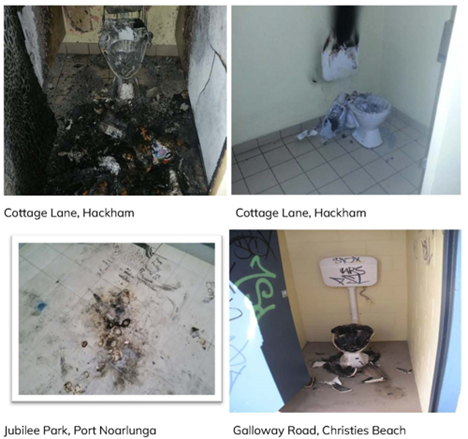
A collection of public toilet vandalism incidents. Photos: City of Onkaparinga/supplied
Of Onkaparinga’s 70 public toilets, only 19 are fitted with stainless steel pans and hand washing basins, which the council administration says are the preferred material for all new and renovated public toilets.
Further, 60 Onkaparinga public toilets are not monitored by CCTV and 52 do not have auto-locking doors.
Auto-locking doors automatically lock between 10pm and 5am and are monitored by an external security monitoring company.
Installing these doors on the 52 remaining facilities would cost $302,200, the council administration estimates, along with $22,776 in ongoing monitoring costs.
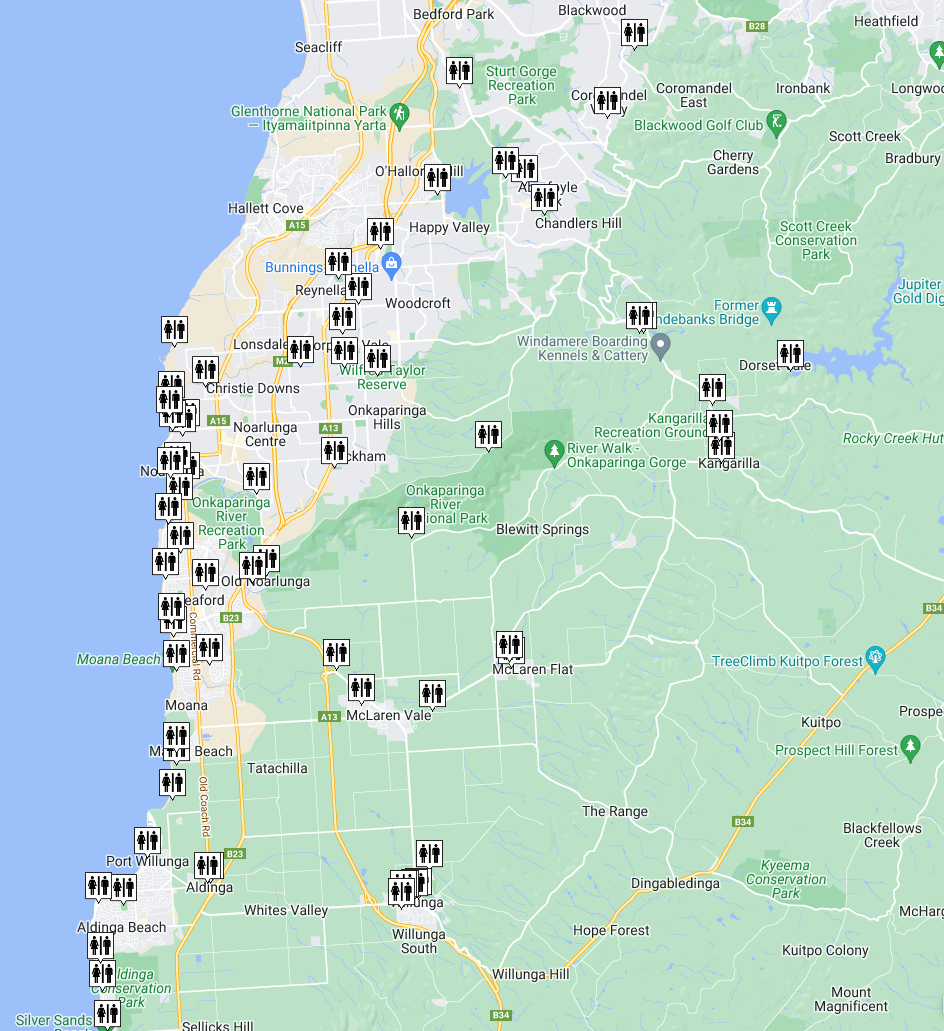
A map of Onkaparinga public toilet locations. Image: City of Onkaparinga
CCTV installation for the 33 public toilet facilities which can safely hold CCTV infrastructure also has an estimated cost of $165,000.
A further $545,400 would be required to supply electricity to 20 public toilets that don’t currently have mains power.
Local Government Association CEO Clinton Jury said graffiti vandalism “burdens communities both socially and financially”.
“Annually, councils spend millions to address damage to infrastructure like public toilets, playgrounds, bins, benches, boardwalks, bridges, sculptures, ticket machines and more,” he said.
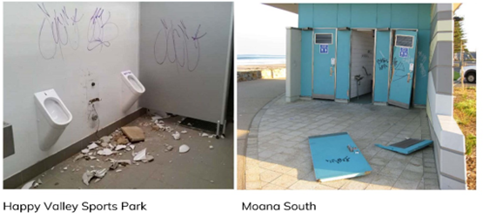
Public toilet damage in Happy Valley and Moana South. Photos: City of Onkaparinga/supplied
“Councils implement a range of proactive actions to tackle these issues, including through education with young people and the broader community, design modifications using graffiti-resistant materials, and graffiti response teams – often engaging dedicated volunteers.
“The community’s role in reporting is vital as we know early removal is important – anyone that sees graffiti vandalism on council-owned infrastructure is encouraged to report it to their local council.”




